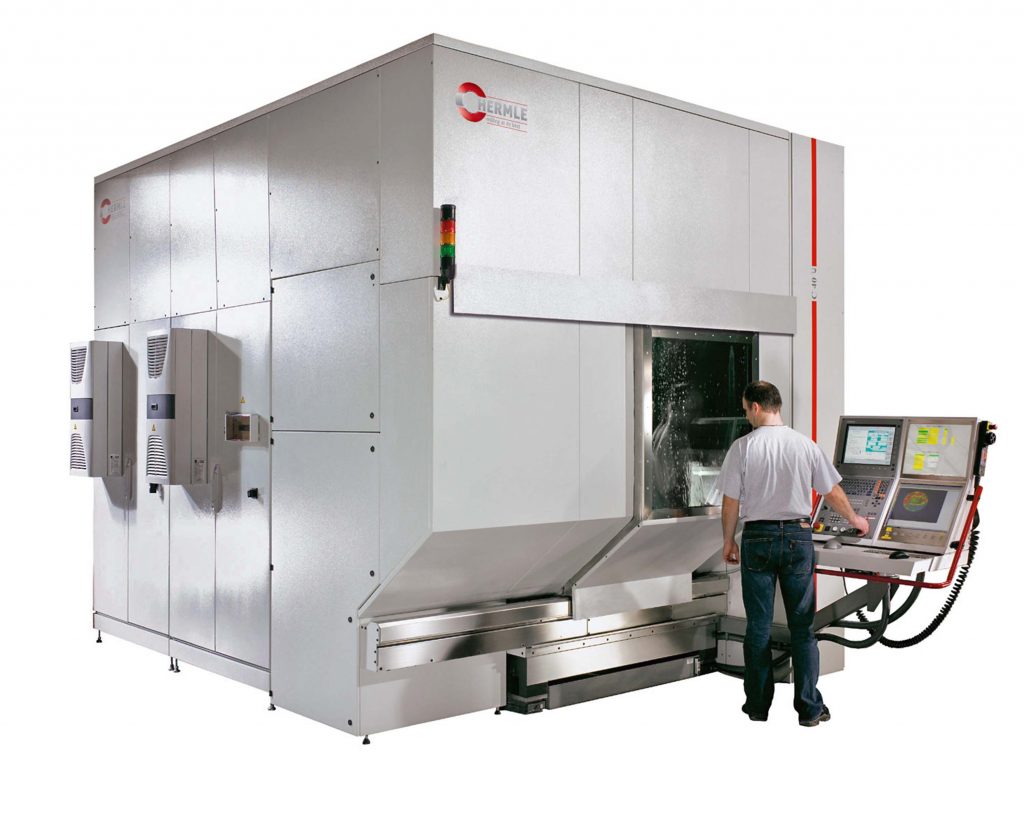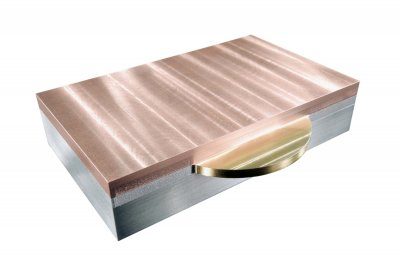Metal cutting and thermal spray forming in one machine
February 24, 2015
Hermle, a German machine tool manufacturer, is integrating Additive Manufacturing capability into a five-axis machining centre in a move that it states will herald a profound change in complex metal component production.
Additive production of 3D metal components often involves an energy intensive laser to melt and fuse successive layers of powder. In contrast, Hermle’s MPA (Metal Powder Application) generative manufacturing technology is a thermal spray process based on lower energy kinetic compacting, or micro-forging.
A five-axis C 40 U machining centre is the host platform for the addition of MPA. The hybrid machine, known as an MPA 40, has a powder application nozzle mounted alongside the vertical milling spindle and a heater built into the 4th / 5th axis rotary swivelling table.
A production cycle involves clamping an application-specific faceplate onto the rotary table, importing the CAD model of the component to be produced, and converting the 3D data into successive micro-forging and milling cycles, which can be followed by water quenching and heat treatment, if necessary.
A high-energy jet of super-heated steam propels metal powder suspended in nitrogen through a Laval nozzle onto a substrate at three times the speed of sound. The impact creates local pressures of 10 GPa and temperatures up to 1,000°C. The result is localised super-plastic deformation, forging the powder particles together and onto the component surface. The fully dense, bonded layer is machined by metalcutting using up to five CNC axes, followed by deposition of a further layer. The process is repeated any number of times to produce the required component.
Powder grain size is between 25 and 75 microns and deposition rate for tool steel, for example, is 4 to 5 cm3/min. Micro-forging allows dissimilar metals to be layered, with either a sharp or a smooth transition between them. Up to six materials can be made available, stored in sealed drums within the machine. Each metal powder requires its own process parameters, which are stored in a knowledge database within the machine control. Materials currently available are 1.2344 and 1.2367 hot-working steels, 1.4404 stainless steel, copper, bronze, titanium and aluminium.
Components produced can be up to 550 mm in diameter, 460 mm deep and weigh up to 600 kg. Almost any internal geometry is possible, as there is an option to use a water-soluble filler material to create internal features, such as conformal cooling channels in plastic injection moulds, that would be impossible to machine conventionally. The filler is subsequently dissolved to leave the desired void.
Although traditional Additive Manufacturing can achieve a similar result, Hermle’s MPA method goes a step further with its ability to micro-forge dissimilar materials, enabling mixed metal solutions like a heat-conducting copper core inside a tool steel exterior.
The firm is currently consulting with customers to identify suitable applications, discuss how the process can be implemented and produce special, dedicated parts for them.

A Hermle MPA 40 hybrid 5-axis machining centre with integrated additive manufacturing capability, sound insulating cabinet and control panel

An example of multiple layering of dissimilar metals by MPA, in this case with sharp transitions, involving a circular brass element sandwiched between aluminium and a copper/steel mixture















